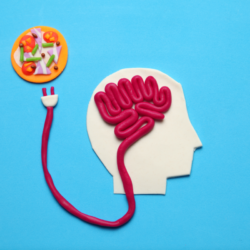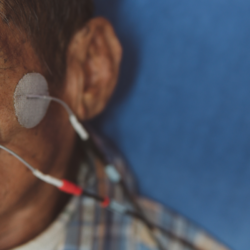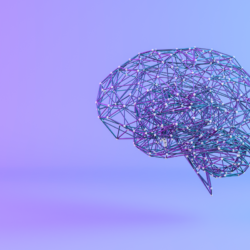Vaginismus is a little-discussed condition, but one that impacts the lives of many women around the world. This sexual function disorder involves a reflex contraction of the pelvic floor muscles, making intercourse painful, difficult or impossible. Research shows that vaginismus can be linked to multiple causes, ranging from physiological factors to deep psychological dimensions. There are solutions to this disorder, combining therapeutic approaches, psychological support and day-to-day management strategies. The aim of this article is to demystify vaginismus by looking at its causes and symptoms, and suggesting solutions for those who suffer from it.
What is vaginismus?
Vaginismus is defined as a female sexual dysfunction characterised by an involuntary contraction of the pelvic floor muscles, more specifically the muscles surrounding the vaginal opening. This reflex contraction often leads to pain, discomfort or blockage when attempting vaginal penetration, which may include inserting tampons, performing gynaecological examinations or engaging in sexual intercourse.
Definition and mechanism
Physiologically, vaginismus is associated with an overactive reflex of the pelvic floor muscles. The exact mechanisms triggering this reflex are not yet fully understood, but they involve an exaggerated muscular response to stimulation or anticipation of penetration. This disorder can be classified as primary, occurring from a woman’s first sexual experiences, or secondary, appearing after a period without symptoms.
Statistics and frequency
Despite the lack of precise data due to the silence and stigma often associated with this disorder, studies suggest that vaginismus affects a significant proportion of women at different times in their lives. Research suggests that between 5% and 17% of women may suffer from vaginismus, although these figures may be underestimated.
Recognition and understanding of vaginismus is essential, as this disorder has considerable repercussions not only on sexual and reproductive health, but also on psychological well-being and the quality of intimate relationships. Appropriate diagnostic and therapeutic approaches are crucial to the management and improvement of symptoms in patients with this condition.
What are the different types of vaginismus?
Vaginismus, characterised by an involuntary contraction of the pelvic floor muscles surrounding the vagina, manifests itself in different forms. Vaginismus is generally classified according to the nature and severity of the symptoms (2).
Primary vaginismus
Primary vaginismus refers to cases where symptoms are present from the start of a woman’s sexual life. Individuals with this type of vaginismus have never been able to achieve pain-free vaginal penetration.
Secondary vaginismus
Secondary vaginismus occurs after a period of sexual functioning without significant problems. It may develop following a specific event, such as childbirth, surgery, trauma or the onset of the menopause.
Situational vaginismus
This type is determined by circumstances, where the involuntary contraction only occurs in certain situations, for example, during sexual intercourse but not when using tampons or during a gynaecological examination.
Global vaginismus
Global vaginismus is when the contraction occurs in all situations without exception, making any form of penetration impossible or painful.
What are the symptoms of vaginismus?
Vaginismus manifests itself through symptoms that can vary in intensity and frequency depending on the individual (4). Identifying these symptoms is crucial to diagnosis and appropriate treatment.
Involuntary contraction of pelvic muscles
The most characteristic symptom of vaginismus is involuntary contraction of the muscles around the vaginal opening. These muscle spasms may occur in anticipation of or during any attempt at penetration.
Pain during penetration
Significant pain or discomfort during penetration is often reported. This pain can be described as a burning, tearing or stinging sensation at the entrance to the vagina.
Difficulty inserting tampons or undergoing gynaecological examinations
Women with vaginismus may also have difficulty inserting tampons or undergoing gynaecological examin ations because of the pain and muscle contraction.
Anxiety about sex
A less visible but equally significant symptom is intense anxiety or fear linked to the thought or attempt of sexual intercourse. This anxiety can sometimes lead to complete avoidance of sexual activity (3).
Impact on intimate relationships
In terms of relationships, the symptoms of vaginismus can lead to tension in the couple, feelings of shame or frustration, and significant emotional distress.
What are the potential causes of vaginismus?
Understanding the causes of vaginismus is fundamental for anyone seeking to come to terms with this complex condition. Research indicates that the origins of vaginismus are multifactorial, often involving a combination of physical, psychological and environmental factors.
Psychological factors
Psychologically, vaginismus can be associated with anxiety, stress or previous traumatic experiences. Studies, such as that published in the Journal of Sexual Medicine (5), highlight the correlation between vaginismus and a history of sexual abuse, although this is not systematic. Feelings of guilt, shame or negative beliefs about sexuality may also play a determining role.
Physiological factors
On the physiological side, conditions such as genital infections or inflammation, pain associated with conditions such as endometriosis or poor lubrication can cause pain during penetration, which in turn leads to an involuntary vaginal response to sexual stimulation.
The influence of education and culture
The sex education (6) received and the cultural context also influence the perception of sexuality and can contribute to the development of vaginismus. For example, studies show that in environments where sexuality is taboo or little discussed, vaginismus seems to be more common.
Impact of interpersonal relationships
The dynamics of relationships and the quality of communication within a couple are also important factors. An understanding and patient partner can make vaginismus easier to manage, while a strained relationship or lack of communication can make symptoms worse.
How is vaginismus diagnosed?
The diagnosis of vaginismus is primarily clinical, based on the medical history and symptoms reported by the patient. A healthcare professional will carry out a detailed assessment to establish the diagnosis and rule out other medical conditions.
Detailed history
The history, or detailed medical history, is the first step. The doctor will talk to the patient to understand the history of her symptoms, her sexual experience, and her medical and psychological history. Specific questions will be asked about pain, penetration and anxiety associated with attempted sexual intercourse.
Physical examination
A physical examination may be attempted, but should be carried out with extreme caution so as not to cause additional pain or anxiety. Some practitioners may initiate an examination with a single finger or with a very small medical instrument to assess the reaction of the pelvic muscles.
Exclusion of other pathologies
Itis crucial to rule out other pathologies that could cause similar symptoms, such as infections, lesions or dermatological disorders. Further investigations may be necessary to rule out these conditions.
Psychological assessment
A psychological assessment may be recommended to explore any psychological or emotional factors that may be contributing to vaginismus.
Treatment of vaginismus
The management of vaginismus is based on a holistic approach aimed at reducing the reflex response of muscles that contract involuntarily, as well as addressing anxieties or fears that contribute to the condition (7). The following treatments are often recommended by healthcare professionals:
Topical therapy
Topical therapy may include theapplication of lidocaine or compound creams to reduce the pain associated with vaginismus. These treatments are designed to reduce sensitivity to pain and facilitate relaxation of the vaginal muscles.
Pelvic floor physiotherapy
A specialist physiotherapist can teach patients techniques to learn how to relax the pelvic floor muscles. This re-education is essential to reduce muscle tension and encourage a gradual approach to penetration.
Vaginal dilator therapy
The use of vaginal dilators, which are tube-shaped devices of progressive sizes, aims to stretch and accustom the vagina to penetration. Prior application of a topical anaesthetic cream can make insertion of the dilators easier.
Cognitive behavioural therapy (CBT)
CBT helps to understand the influence of thoughts on emotions and behaviour. It has been shown to be effective in treating anxiety, depression and post-traumatic stress disorder (PTSD), which can be associated with vaginismus.
Sex therapy
Trained sex therapists support individuals and couples as they rediscover sexual pleasure. They provide personalised strategies for overcoming vaginismus in intimate relationships.
Progressive desensitisation: a therapeutic approach to vaginismus
Progressive desensitisation is considered to be the basic treatment for vaginismus (8)(9). This therapeutic method involvesslowly and progressively exposingthe patient to penetration, using a step-by-step approach designed to reduce the anxiety and pain associated with penetration.
First steps in desensitisation
The process begins by encouraging the person to touch an area as close as possible to the vaginal opening without causing pain. Each day, the individual is invited to bring their touch closer to the vaginal opening, taking care to remain within a comfort threshold.
Familiarisation with touch
Once the person is able to touch the area around the vagina, they are encouraged to explore and gently spread the vaginal lips, or labia. The next step is to insert a finger without feeling any pain.
Use of dilators
Once this stage has been completed comfortably, learning to usea plastic dilator or conical insert can begin. If insertion is painless, it is advisable to leave the object in place for 10 to 15 minutes to get the muscles used to the pressure. You can then progress to a larger insert andteach your partner how to apply it.
Integrating the partner into the therapy
When the person feels comfortable with these steps, they can allow their partner to position their penis close to the vaginal entrance – without penetration. When this proximity is completely comfortable, the couple can consider resuming sexual intercourse, gradually increasing intimacy as was practised with the inserts.
Relaxation techniques
This type of therapy can be complemented by learning relaxation techniques, which are particularly useful when the cause of vaginismus is psychological, such as anxiety.
Scientific references
Medical sources such as the Journal of Behavioral Therapy and Experimental Psychiatry have documented and supported the effectiveness of progressive desensitisation in the treatment of vaginismus, highlighting the significant reduction in pain and anxiety during penetration attempts.
Progressive desensitisation is therefore the treatment of choice, effectively helping people with vaginismus to overcome their symptoms and regain a fulfilling sex life.
Vaginismus: a physical or psychological disorder?
Vaginismus is often mistakenly regarded as a purely “psychological” or “mental” problem. But this complex condition has both physical and psychological components, and understanding it requires an integrated approach.
The physical component of vaginismus
On a physical level, vaginismus manifests itself as an involuntary reflex contraction of the pelvic floor muscles, making penetration painful, difficult or even impossible. This symptom is very real and involves an involuntary bodily reaction that is not solely controlled by psychological factors.
Associated psychological factors
On the psychological side, various factors can influence the development or persistence of vaginismus, such as anxiety, stress, previous traumatic experiences or educational and cultural beliefs about sexuality.
Interdependence of factors
It is crucial to recognise that psychological factors can trigger the physical response to vaginismus and, conversely, that the experience of pain can lead to increased anxiety and fear, creating a vicious circle that is difficult to break.
Multidisciplinary approach to treatment
Therefore, treating vaginismus often requires collaboration between physical health specialists (such as gynaecologists or physiotherapists) and mental health specialists (such as psychologists or sex therapists) to address all aspects of the condition (1).
Sources:
(1) https://academic.oup.com/jsm/article-abstract/19/Supplement_2/S228/7013310
(2) https://pubmed.ncbi.nlm.nih.gov/19851855/
(3) https://pubmed.ncbi.nlm.nih.gov/11076336/
(4) https://www.ajog.org/article/0002-9378(78)90822-0/fulltext
(5) https://pubmed.ncbi.nlm.nih.gov/34366265/
(6) https://www.ncbi.nlm.nih.gov/pmc/articles/PMC10411750/
(7) https://www.ncbi.nlm.nih.gov/pmc/articles/PMC5440634/
(8) https://pubmed.ncbi.nlm.nih.gov/6102843/
(9) https://www.researchgate.net/publication/233909017_Interventions_for_vaginismus







